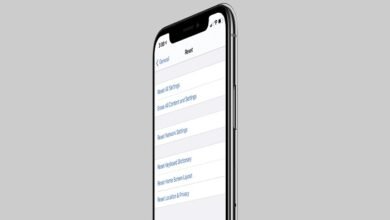
What is a Spill Error in Excel?
A spill error in Excel occurs when a formula or function that is intended to return multiple values can’t do so because the intended spill range is blocked by other data. In other words, Excel doesn’t have enough space to display all the results. This error is typically associated with dynamic array functions, which are designed to return multiple results.
Common Causes of Spill Errors
Understanding the root cause of a spill error in Excel is crucial for resolving it. Common causes include:
- Blocked Spill Range: When the area where the results are supposed to spill over is already occupied.
- Merged Cells: If the spill range includes merged cells, Excel cannot display the results.
- Data Tables: Tables do not support spilling results into their cells.
- Array Formulas: Traditional array formulas can sometimes conflict with dynamic arrays, leading to spill errors.
Identifying Spill Errors
When a spill error occurs in Excel, it is indicated by a #SPILL! error message in the cell where the formula was entered. Excel also provides a helpful tooltip that offers more details about the cause of the spill error. This tooltip is your first step in troubleshooting.
Resolving Blocked Spill Range
One of the most common causes of a spill error in Excel is a blocked spill range. To resolve this:
- Check the cells around the formula for any data or formatting that might be blocking the spill range.
- Clear the contents of any obstructing cells.
- Ensure there are no merged cells in the spill range.
Managing Merged Cells
Merged cells can be a significant source of spill errors in Excel. Since dynamic arrays require a continuous, unmerged range to spill into, you should:
- Avoid using merged cells in areas where you expect dynamic arrays to spill.
- Unmerge any merged cells within the spill range.
- Adjust your worksheet layout to accommodate unmerged cells.
Handling Data Tables
Excel data tables are incredibly useful for managing large datasets, but they can interfere with dynamic arrays. To handle this:
- Ensure that your formulas and functions are placed outside the table range.
- If necessary, convert the table back to a normal range to allow spilling.
- Use structured references appropriately to avoid spill errors.
Dynamic Arrays and Traditional Array Formulas
Traditional array formulas and new dynamic arrays can sometimes clash, leading to spill errors. To manage this:
- Replace traditional array formulas with dynamic arrays wherever possible.
- Update your formulas to take advantage of dynamic array functionality.
- Ensure that your workbook is set to allow dynamic arrays.
Preventing Spill Errors
Preventing spill errors in Excel requires a proactive approach:
- Design your spreadsheets with sufficient space for dynamic arrays to spill.
- Regularly audit your sheets for potential spill range blockages.
- Stay updated with Excel’s latest features and best practices for dynamic arrays.
Advanced Techniques for Spill Errors
For advanced users, managing spill errors can involve more sophisticated techniques:
- Use the
FILTERfunction to create dynamic ranges that adjust to your data. - Implement
SEQUENCEandUNIQUEfunctions to generate spill-friendly arrays. - Apply conditional formatting to highlight potential spill range issues before they occur.
Best Practices for Dynamic Arrays
Adopting best practices for dynamic arrays can minimize spill errors and improve overall spreadsheet efficiency:
- Regularly update Excel to access the latest features and fixes.
- Educate yourself on new functions like
SORT,SORTBY,RANDARRAY, andXMATCH. - Plan your spreadsheet layout to accommodate the flexibility of dynamic arrays.
Conclusion
Spill errors in Excel can be a source of frustration, but with the right knowledge and techniques, they are entirely manageable. By understanding the causes of spill errors, identifying them accurately, and applying the appropriate solutions, you can ensure your spreadsheets run smoothly. Remember to design your sheets with ample space for dynamic arrays, avoid merged cells in spill ranges, and stay updated on Excel’s evolving features.
FAQ
1. What causes a spill error in Excel?
A spill error in Excel is caused by a blocked spill range, merged cells, data tables, or conflicts with traditional array formulas. The error occurs when Excel cannot display the multiple results of a dynamic array function.
2. How do I fix a blocked spill range in Excel?
To fix a blocked spill range, clear any data or formatting obstructing the spill area, unmerge any merged cells, and ensure there is enough space for the dynamic array to spill.
3. Can I use dynamic arrays in Excel tables?
No, dynamic arrays do not spill into Excel tables. To use dynamic arrays, place your formulas outside the table range or convert the table to a normal range.
4. What are some best practices to avoid spill errors?
Best practices to avoid spill errors include designing spreadsheets with sufficient space for dynamic arrays, avoiding merged cells in spill ranges, regularly auditing your sheets, and staying updated with Excel’s latest features.
5. How do dynamic arrays differ from traditional array formulas?
Dynamic arrays automatically adjust to return multiple results, whereas traditional array formulas require specific ranges and manual adjustments. Dynamic arrays are more flexible and user-friendly, reducing the likelihood of spill errors.



